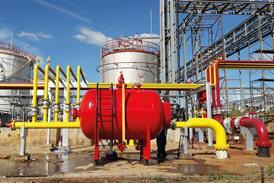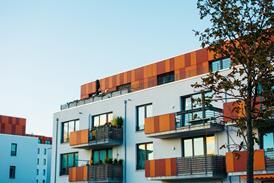- News

All the latest updates on building safety reformRegulations latest
- Focus
- Comment
- Programmes
- CPD
- Building the Future
- Jobs
- Data
- Subscribe
- Events

2024 events calendar
Explore now
Building Awards
Keep up to date
- Building Boardroom
HS2's Kay Hughes: 'We see ourselves as catalysts for creative thinking'

The design director of Britain’s biggest - and arguably most controversial - infrastructure project talks about her ambition to leave a legacy of quality structures and landscapes along the route
The last time that Kay Hughes and I met, we were politely waving each other on at a zebra crossing in south-west London – she a cyclist, I a pedestrian – before we recognised each other and stopped for a distanced chat. She had taken the afternoon off to clear her head and had ridden from her north London home to Horace Walpole’s exuberantly gothic Strawberry Hill villa.
It must have been a 30-mile round trip but for Hughes, who qualified as an architect in 1991 and worked for Denys Lasdun and Ted Cullinan before moving client-side 20 years ago, jumping on her bike is as much about learning as transport. A few months after the EU referendum she led a bunch of built-environment buddies on a cycling trip to the Netherlands to see what could be learnt from its urban extensions and infrastructure before the drawbridge went up.
In a letter home, published in Building Design, she wrote: “The headlines are: the UK should, in a time of limited resources, spend less time and money on regulating and administrating small issues and spend more on strategic planning, design-led delivery and leadership to achieve more effective outcomes.” Five years later her argument is more pressing than ever.
Several of the women on that trip, including Hughes, went on to win a National Infrastructure Commission (NIC) ideas competition for the Oxford-Cambridge corridor with their VeloCity proposal for a network of villages linked by public transport and cycle routes. Two years after that, in October 2019, Hughes was appointed design director of HS2 Ltd, the company tasked with building a £100bn high-speed railway connecting London and the North, giving her the chance to implement some of the ideas that she garnered on that Dutch study trip.
Now 18 months into the job, she spoke to Building Design about her ambition for this complex piece of national infrastructure and her conviction that its success will rest on the quality of the structures and landscapes they leave behind as well as a smooth passenger experience.
…
Already registered? Login here
To continue enjoying Building.co.uk, sign up for free guest access
Existing subscriber? LOGIN
Stay at the forefront of thought leadership with news and analysis from award-winning journalists. Enjoy company features, CEO interviews, architectural reviews, technical project know-how and the latest innovations.
- Limited access to building.co.uk
- Breaking industry news as it happens
- Breaking, daily and weekly e-newsletters
Get your free guest access SIGN UP TODAY

Subscribe now for unlimited access
Subscribe to Building today and you will benefit from:
- Unlimited access to all stories including expert analysis and comment from industry leaders
- Our league tables, cost models and economics data
- Our online archive of over 10,000 articles
- Building magazine digital editions
- Building magazine print editions
- Printed/digital supplements
Subscribe now for unlimited access.
View our subscription options and join our community
















